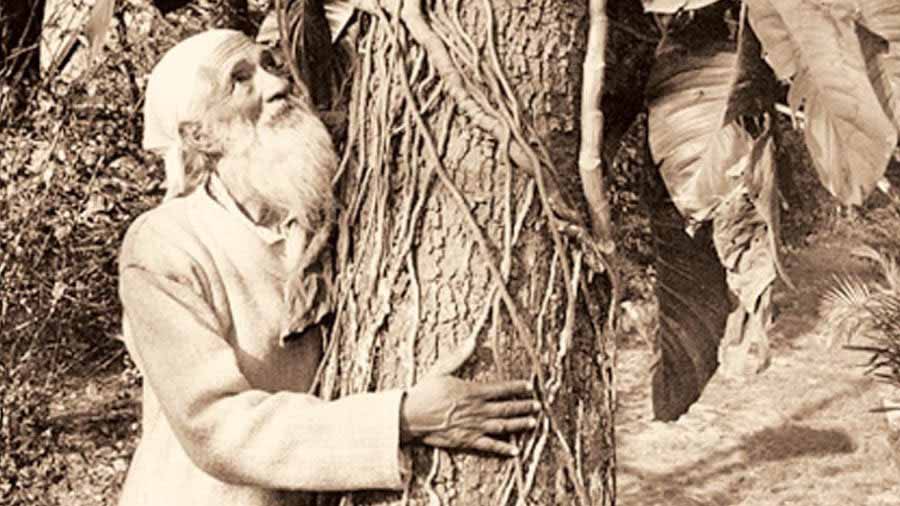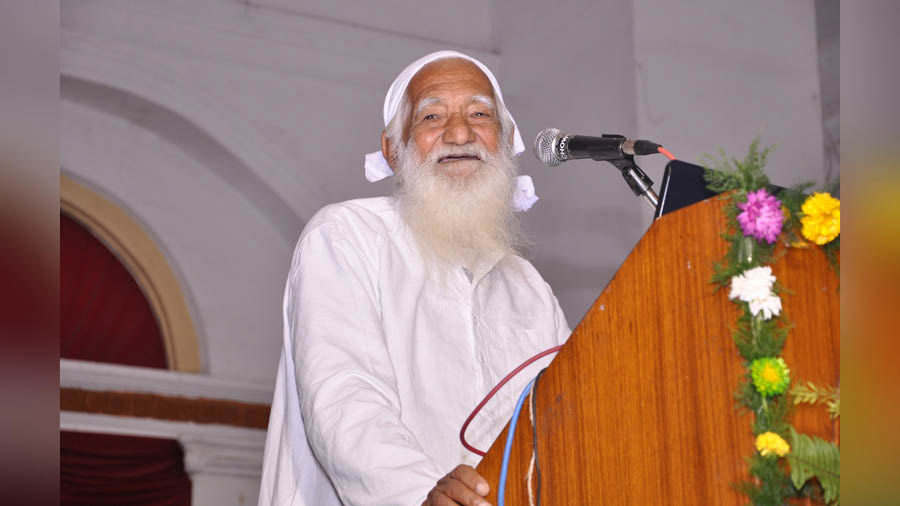Sunderlal Bahuguna (January 9, 1927 — May 21, 2021) was known to the world as the leader of the Chipko Andolan. On March 27, 2023, as Chipko turned 50, Bahuguna’s role in shaping the landmark global environment movement perhaps needed to again be affirmed, maybe even defined. An iconic environmental activist, Bahuguna had turned a small local agitation into a pan-Himalayan movement. In the decade before he died, he spoke to The Plurals News Network on many occasions, elaborating on his transformative actions and philosophies.
Bahuguna was at the forefront of the Chipko movement at a time when only a handful of people were manifesting their concern for the environment. Once, when asked about how it felt to go it alone, Bahuguna smiled. “Let me correct you,” he said. “It was the village women of Uttarakhand (then Uttar Pradesh) who started the Chipko Andolan by embracing trees in an effort to save them. These trees were being cut by government contractors to make cricket bats!” While in those days the culling of trees was not considered an environmental offence, “these trees were a vital part of life and livelihood for many women in the area”.

Bahuguna had turned a small local agitation into a pan-Himalayan movement ABP archives
Often, when reminded that without his intervention Chipko might have never become a mass pan-Himalayan movement, Bahuguna would quickly downplay his achievements. “I joined the movement later, and subsequently tried to help it in spreading to Karnataka and other places,” he once told us. “With the contribution of all, one local protest, which had its origin in 1973, in Alakananda Valley’s Mandal village, quickly catapulted into a mass movement against the rampant felling of trees across the country, particularly in the Himalayas.”
Looking back, however, it still seems staggering that Bahuguna and his colleagues were able to motivate scores of largely uneducated people to fight for the environment so many decades ago. Today’s experts, in comparison, struggle to impact even educated people in urban areas. “The problem with today’s experts is that they think with the brain and then try to act with the hand,” Bahuguna said. “We were used to taking issues from the brain to the heart first, and only then to the hand. Unless you convince people that their very existence is linked to their activism, nothing can be achieved. Moreover, the villagers may lack formal education, but they stay much closer to nature and, hence, understand what is good or bad for them.”

Bahuguna and his colleagues were able to motivate scores of largely uneducated people to fight for the environment The Plurals News Network
Early Warning System
Bahuguna, on one occasion, remembered walking from Kashmir to Kohima: “We marched for 5,000 km to demand the stoppage of this green massacre in the Himalayas. People joined the movement en masse, and, finally, Indira Gandhi, the then prime minister, agreed to discontinue the cutting of trees in the Himalayas beyond a certain height.”
For years, Bahuguna’s relationship with the Indian government was contentious, even confrontational at times. Not only did he fight it during the Chipko movement, he was also a fierce opponent of the Tehri Dam. Bahuguna admitted it felt “strange” to receive the Padma Vibhushan from the Centre in 2009. “I had earlier refused to accept the Padma Shri, but in 2009, I accepted the award in the hope that it would add some weight to my proposal for a detailed Himalaya policy. This is something I have long been rooting for. Without such a policy, the Himalayas will perish in no time, especially with the persistent changes in our climate, as also global warming.” Bahuguna considered climate change “a real threat”. He said, “It is a fact that the glaciers are receding in the Himalayas, faster than before. The rivers are getting affected. I have been living beside the Ganga for six decades, and I can feel that its volume has significantly dwindled during this period.”

Bahuguna’s relationship with the Indian government was contentious, even confrontational at times Getty Images
Bahuguna almost always felt compelled to link his Himalayan policy to the Chipko movement: “I feel the entire Himalayas should be converted into a natural dam with very aggressive afforestation. This will allow the water to run in its original courses. Today, the water is being channelled through a different course — dam projects like Tehri are a case in point — but in the long run, these dams will become ineffective with the gradual dwindling of water that will result from climate change. The Himalaya policy will not only bring back water to rivers like the Ganga, but it will also minimise the impact of climate change. Unless you can save the Himalayas and the Ganga, you cannot save this country.”
Early Course Correction
Bahuguna often preferred activists to politicians. “Politicians only think about the next five years while social activists think about the next five generations,” he would say. Strangely, however, Bahuguna was once a politician himself. Having joined politics at the early age of 12, he went on to hold the post of general secretary in the Uttar Pradesh Congress after Independence. “My wife Vimla was a follower of Gandhiji’s disciple, Sarla,” he told us. “She had laid down a condition before our marriage — I would have to leave politics and work for social development in remote villages. Hence, I left politics, set up an ashram in a distant village and joined the social movement — it was the turning point of my life,” he smiles.
Bahuguna’s biggest possible revelation came when we suspected that his emotionality is guided by some Bengali gene: “We are actually Bengalis. In fact, we are Bandopadhyays. A few generations ago, my ancestors travelled to U.P. from Bengal in search of fortune. They accidentally cured an ailing king who gifted them the Bahuguna jagir (estate), and we became Bahugunas.” Alleviation, this anecdote made clear, was perhaps always part of his DNA.
